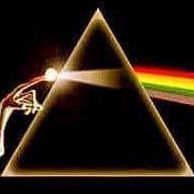Leaderboard
Popular Content
Showing content with the highest reputation on 10/25/13 in all areas
-
EDIT: Please see the main thread with the latest version of this info:3 points
-
2 points
-
Hi All! Bumping up Groomy's hard work for reference - I don't know where else it's still listed! Noah2 points
-
2 points
-
“What is Active Bi-Amping/Tri-Amping?” Active bi-amping uses one amplifier for low frequencies and another for mid-to-high frequencies—per audio channel. Tri-amping adds one more amplifier for a 3-way system tweeter. This is done via the use of an active crossover unit which is inserted between the preamplifier and power amplifiers. “What are the advantages of active bi-amping/tri-amping?” It provides much greater driver control than a passive crossover/full-range-loaded amplifier configurations. It provides a better load for your amplifiers to drive, and an effective gain in each amplifier’s effective output. It will provide lower amplifier-originated intermodulation distortion (IMD). It provides much greater protection of your tweeter/midrange drivers under clipping/overload conditions. It provides the ability to use less expensive amplifier designs for each driver. It provides for time alignment of drivers within a single speaker (a “must have” capability) It provides for better crossover performance in both amplitude AND phase in the crossover region for smoother crossover performance, including more stable soundstage imaging vs. frequency. It provides stability of crossover performance relative to passive crossover drift during and immediately after under high-load speaker output conditions, i.e., it maintains electrical output linearity under heavy load conditions. It requires lower-quality wire/connectors than a similarly configured passive crossover/full-range amplifier configuration. It allows on-the-fly changes in crossover frequency, EQ and channel gain settings to support changes in your setup configuration, i.e., facilitating the fine-tuning use of tools like Room EQ Wizard [REW], replacing individual drivers, speaker position changes, and adding channels for playback (2.0, 5.1, 7.1, etc.). “What are the disadvantages of active bi-amping/tri-amping?” It requires two/three power amplifier channels per speaker (with associated wires/connectors). It requires an active crossover unit. “What is an ‘active crossover’?” An active crossover provides separation of frequencies of the incoming pre-amplifier output signals, breaking each upstream channel into two (bi-amping) or three (tri-amping) downstream channels: a woofer channel and mid-range/tweeter channel). It provides higher-quality equalization (“EQ”) capability for each channel. Digital crossovers typically provide for delay to allow for time alignment of the drivers within a single speaker. (This is a similar function to an AV Processor that time aligns speaker-to-speaker in a 5.1/7.1 array.) See https://en.wikipedia.org/wiki/Audio_crossover#Active “Do I need to disconnect my speakers’ passive crossovers from my drivers?" Yes. At least the woofer (or low frequency driver) must be disconnected from the passive crossover to permit bi-amping. If your speakers are 3-way (i.e., woofer, midrange, tweeter in each cabinet), then you may retain the passive crossover between the midrange and the tweeter if using bi-amping (…but for tri-amping, all drivers must be disconnected from the passive crossover networks) Can I use ‘passive bi-amping’?” Passive bi-amping does not bring the benefits of active bi-amping, only the disadvantages of extra cables and connectors. Generally, it is not worth the expense of the extra amplifier. In particular, passive bi-amping does not provide for delay adjustment or filter/EQ parameter flexibility. What active crossover brands/units should I use? Many manufacturers make DSP crossovers, including ElectroVoice (Dx38, DC-One), dBX (except the lowest priced DriveRack...which I don't recommend), Yamaha (SP2060), Ashly Protea, Behringer DCX2496 (...avoid this one, too...), Xilica (XP and XD series models), Lake, DEQX, etc. Prices go from $230(US) to many thousands of dollars. There are also lower-cost alternatives, such as miniDSP 2x4 HD and 4x10 HD (avoid the miniDSP "2x4" without the "HD" designation.) Price is generally commensurate with sonic performance. More recently, there are automotive DSP crossovers of lower overall quality and correspondingly low price. In general, I don't recommend these for horn-loaded loudspeakers. There are bundled units with power amplifiers, such as the FusionAmp from Hypex (class D amplifier), and various PA amplifiers from Crown and other companies. These tend to be hit-or-miss propositions. In general, these DSP amplifiers are noisy and/or lack sufficient amplifier fidelity that most home hi-fi enthusiasts tend to want/use. I would ask questions from users on this forum, and the exact type of loudspeakers they used them with (i.e., lower sensitivity vs. higher sensitivity) and the application domain (home hi-fi or commercial PA duty) before investing in these. Analog active crossovers are also available, but lack useful delay, EQ and effective limiting. I don't recommend them for horn-loaded loudspeakers since DSP crossovers of quality can be had for about the same price. Have I seen active crossovers used in configurations other than an active crossover box? Probably--the "powered subwoofer" channel found on most AV Receivers/Processors is a limited example of a for-purpose active crossover channel (i.e., mono bass channel). Usual features include gain control (at the integrated subwoofer/power amplifier unit), user selectable crossover frequencies, and sometimes GEQ/PEQ (graphical and parametric equalizer) filters built into the AVR/AVP. Delay adjustment for each speaker channel is usually included in the AVR processor functionality to correct for speaker distance room placement variances. Additionally, an "Audyssey"-like feature on some AVRs/AVPs features a built-in real-time analyzer (RTA) to help the user set up their speakers in a room environment. (16 Nov. 2010 edit) Can I use a 2-in, 4-out processor (like the EV Dx38) to Tri-amp my three-way speakers? Yes: if you disconnect two of the three speaker drivers from their passive crossovers, then connect the tweeter and (usually) midrange driver to the 2-in, 4-out processor, leaving the last (usually woofer) channel connected to one amplifier, and the other two outputs from the active crossover connect to the inputs of two other amplifier channels, then you can tri-amp your speakers. Note that this will take three amplifier channels per speaker. If you are like many here, finding extra amplifiers to drive your speakers in tri-amp mode is usually not a big issue. Note that you will not have the flexibility to change the crossover frequency of the woofer to the midrange, nor be able to EQ the woofer channel with the active crossover, but you will still be able to use the active crossover to EQ the most important portions of the spectrum and digitally delay the other two drivers in order to time-align your speakers. Some Klipsch models (e.g., Heresy, Cornwall) have a long midrange horn and a direct radiator woofer. This means the the driver with longest delay -- the midrange driver -- will stay connected to the original passive crossovers, and the other two driver channels (tweeter and woofer) can be digitally delayed by the active crossover to time-align to the midrange. EDIT: 14 Nov 2016-- New users of active crossovers looking for more detail on how to install them into the setups can refer to this thread on using Xilica active crossovers: _______________________________________________________________________ EDIT: 14 Nov 2016-- Users of active crossovers seeking to set their parametric equalization filters (PEQs) easily and rapidly will be interested in using Room EQ Wizard (REW) to generate and optimize those semi-automatically. A link to a tutorial thread on that subject can be found here: Chris1 point
-
I've searched and don't quite see what I'm trying to determine. So sorry if this is old news to many.... I'm one of those late 80's sound guys that put away thier system during kids. I'm now getting ready to pull out my old KG-4s (in great shape by the way) and pair them with good center, sub and rears. I'm mainly concerned about the center. I know the standard recommendation is the KV-3. But my questions are 1) I have a local KV-2 for a good price. Does it hold up OK with the KG4's or too small? 2) Speaking of size the current RC-42II fits perfectly in my entertainment center. But again is that too small? 3) Do any of the current series pair better with the old KG series? Now that I'm getting back into it I can see maybe modernizing some in a couple of years. And if anyone wants to throw out recomendations for sub, rears and a new AV receiver...I'm listening. Thanks in advance.1 point
-
1 point
-
It seems that most of the time good centers go for what a pair of KG3 or 4s go for. For that reason I am using 3 pairs of KGs in a 6.1 setup. Three KG4s for the front, KG 3.2 on the sides, and the remaining KG4 for rear. All speakers sound great together and it is surround sound on the cheap. Don't think I paid more that $150 for any of the KG pairs. I have seen several Academy for sale in my area but the price is always over $300.1 point
-
1 point
-
Just use the reputation point vote up/down links. It's better that way Capture.JPG How would I do that in this instance where I wanted to thumbs up your quote?1 point
-
Philly, Even though the RF-5 is a very efficient speaker, the 2265 may not have the low impedence driving capabilitiy to handle the some of the sub 4ohms dips. I don't know what those exact figures are but maybe something to consider. Bill1 point
-
You can always post the address of any emoticon. Like this http://www.sherv.net/cm/emoticons/party/chugger-smiley-emoticon.gif looks like this1 point
-
Leave the jumpers where they are and connect your positive speaker wire to one of the red inputs and negative wire to one of the black inputs.1 point
-
Go for it. Watch a YouTube video, or 2, about soldering. Use a small (~25 watt) soldering iron; do not use a soldering gun. Use ~ 60/40 rosin core solder; do not use acid core/flux. Good luck and keep us posted. The following thread might serve as inspiration: http://community.klipsch.com/index.php?/topic/62250-four-abused-lascalas-need-a-good-home-sold/page-2 BTW, be careful with that 9v battery. You could easily fry a tweeter voice coil. A 1.5 volt is safer, but not fool-proof.1 point
-
People who really have OCD are calling it CDO these days, because that's the order the letters are supposed to be in!1 point
-
1 point
-
Chad, Thank you for all the work on the new forum. I didn't realize how addicted I was to the forum 'till it wasn't 'live' any more. I know how difficult it is to migrate a forum and can't even imagine the difficulty with a forum of this size. Great work and well done. As always, there will be some growing pains, but so far I like the look and feel.1 point
-
1 point
-
1 point
-
I agree Erik, which is why I didn't understand the point of steering the thread into the direction of a topic that has been completely beat to death. My use of the words "high pass" includes both the midrange and tweeter branches of the filter. If I say that section of the filter is too hot, and you say people are attenuating, then you have done a poor job of disagreeing with me. The network in question can be set to match the Klipsch midrange output, and the tweeter section has slightly elevated output as compared to the Type AA. So, I don't think I can agree with you. From my website: "There is no such thing as the "perfect crossover", only the crossover that works best for you and your unique set of circumstances. All of these crossovers sound great, but that doesn't mean that each one is ideal for every person or situation. We all hear differently, use different equipment, have different rooms, sit at different distances from the speakers, and have our own idea of what the perfect volume level is for our listening sessions. These factors, as well as simple personal preference, will dictate the choice of the correct crossover. I believe a big part of my job is helping you find the right crossover for your system and listening preferences. Personal experience with a multitude of crossovers and various parts, combined with over a decade of customer feedback makes me well qualified to help you make the right choice." Thanks for you input,1 point
-
Dangerous Dogma & Silly Superstitions of Religious BeliefsThe Silly and Often Dangerous Dogma of Traditional Religions and their Superstitious Beliefs0 points
-
what no BS forum? What is audio without drinking and discussing? you might like my https://www.facebook.com/pages/Dangerous-Dogma-Silly-Superstitions-of-Religious-Beliefs/101107586602278 Read the Notes: https://www.facebook.com/pages/Dangerous-Dogma-Silly-Superstitions-of-Religious-Beliefs/101107586602278?id=101107586602278&sk=notes-1 points
-
I like your site, but must ask: do you have a death wish? You may like: http://www.jesusandmo.net/-1 points

















